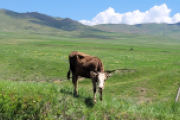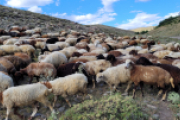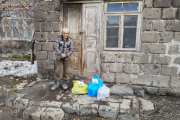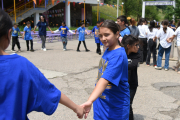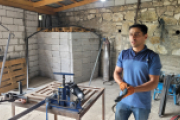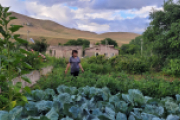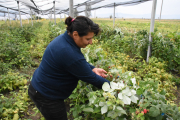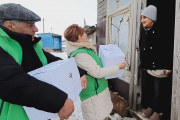According to the 2021/2022 Human Development Report, around three million people live in the Caucasian country, 90 % of whom belong to the Armenian Apostolic Church. The population of the presidential republic, which has been independent since 1991, is still suffering from the consequences of the 1988 earthquake and the unresolved conflict with Azerbaijan over the Nagorno-Karabakh region. Poverty and a high unemployment rate of 15 % according to the International Monetary Fund are the result. Industry is poorly developed in Armenia. Livestock and agriculture are widespread. Depending on the region, the country has both a dry climate with temperatures of up to +45 °C and lows of up to -40 °C.
Projects in this country
Sheep bring Hope
In the Shirak region of northern Armenia, which is characterized by poverty and unemployment, 15 vulnerable families receive sheep. The sale of dairy products and wool, as well as covering the households' own needs, improves their livelihoods. The first three newborn lambs are given to other...Multisectoral aid project in Armenia
After the Azerbaijani offensive in September 2023, hundreds of thousands of people fled from Nagorno-Karabakh to Armenia. The often traumatic experiences leave physical and psychological wounds and accompany the refugees as they try to start a new life. At the same time, the past influx of refugees...Psychologically supervised summer camps for displaced children in Armenia
When fleeing from Nagorno-Karabakh, displaced children have often left a part of their childhood behind. The summer camp offers these children important psychosocial support in a playful way to help them come to terms with their sometimes traumatizing experiences. Through art therapy, theater games...Work and new prospects for young adults
The north of Armenia is characterized by poverty due to a lack of income opportunities, among other things. Women and young adults in particular find it difficult to find a job in the remote provinces of Tavush and Gegharkunik. A lack of training opportunities and information on market trends leads...Food security for smallholder farmers
Shirak province in northern Armenia is characterised by poverty and poor agriculture. As part of the project, smallholders receive seeds and are trained in improved cultivation, irrigation and crop storage methods.Alternative farming methods for smallholder farmers
Shirak province in northern Armenia is characterised by poverty, inefficient agriculture, rural exodus and migration. The project helps by issuing more efficient seeds and by improving cultivation, irrigation and crop storage methods.Bitter winter, bitter hardship
In two winter relief campaigns, our employees Wigen Aghanikjan and Aljona Zeytunyan hand over food packages, soap and washing powder to 150 families each year. The recipients are victims of the 1988 earthquake - destitute families, some of whom still live in destroyed houses, pensioners and invalids...Country reports
There is currently no content.


 Donate now
Donate now
